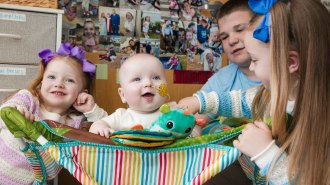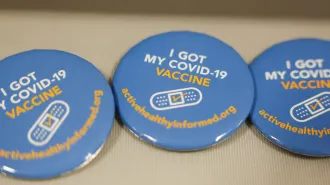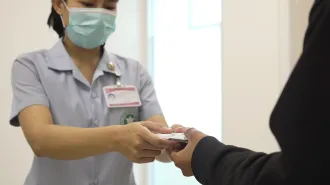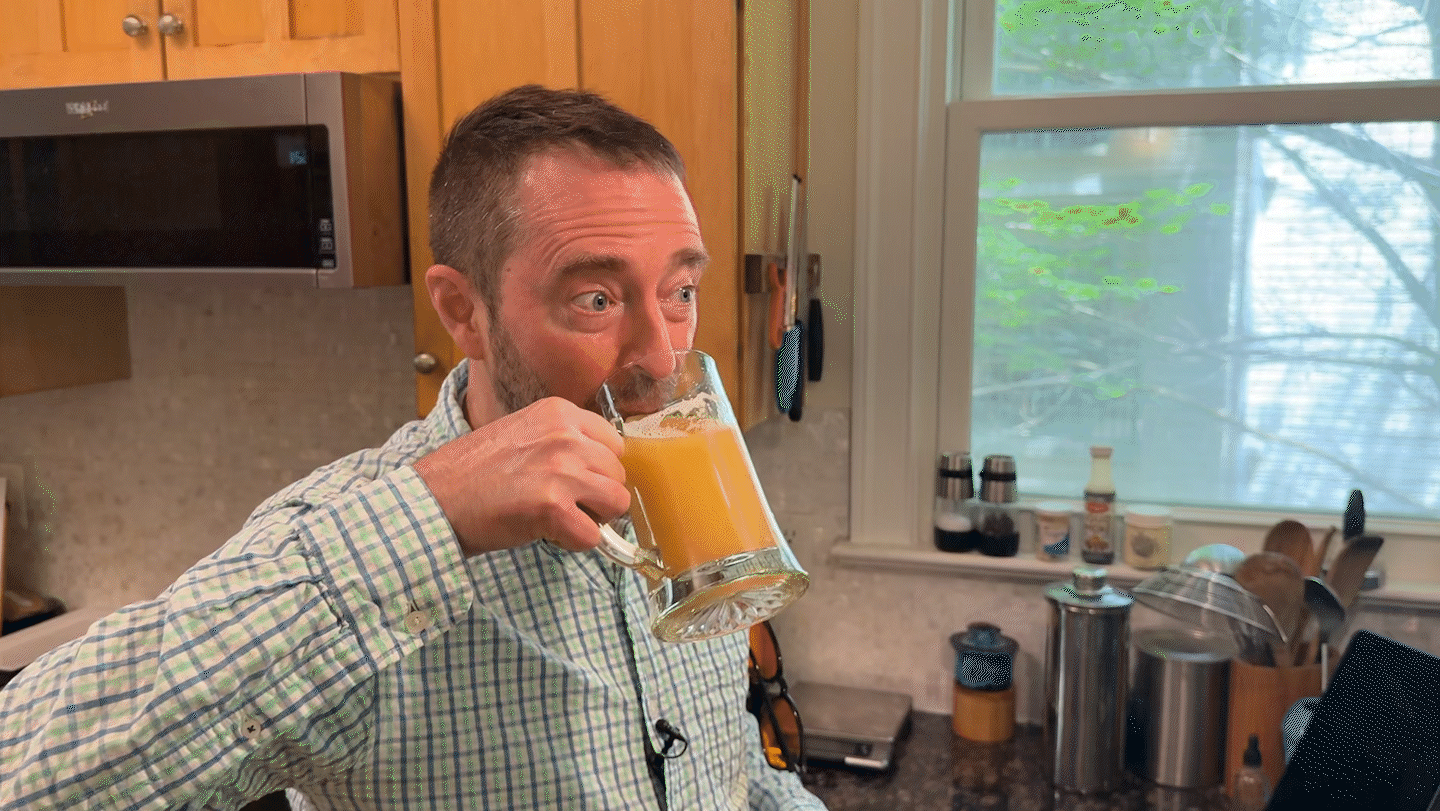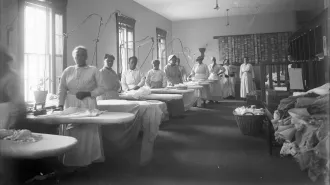Cancer patients froze reproductive tissue as kids. Now they’re coming back for it
Implanting the tissue back into their bodies could give these patients a shot at having biological kids

Efforts to save reproductive tissue from kids treated for cancer represent a concerted focus on improving their quality of life by preserving their fertility.
Illustration by Manocki
On the morning of Jaiwen Hsu’s stem cell transplant in November 2023, the atmosphere in the hospital felt electric. Doctors had never before tried what they were going to attempt with someone like Hsu.
There was this building buzz, he says, a sense of anticipation mingled with hope. The procedure wasn’t like surgeries Hsu had had in the past, some 15 to 20 since being diagnosed with bone cancer at age 11. Those surgeries were often large-scale, scary operations that ended with him waking in pain.
But this morning, at UPMC Magee-Womens Hospital in Pittsburgh, “no one was scared,” Hsu says. “It was just excitement.”
In 2011, doctors had snipped a piece of tissue from Hsu’s prepubescent testicles. They chilled a suspension of his cells and stored them in liquid nitrogen, a process called testicular tissue cryopreservation. The goal was to save Hsu’s fertility.

At the time, he had just begun an intense regimen of chemotherapy to treat a tumor growing in his femur. Though chemo could save his life, the toxic treatment would likely damage his sperm-making cells — unless his doctors could preserve them.
Freezing sperm — the standard option to preserve a man’s fertility — isn’t possible for boys who haven’t gone through puberty. But freezing testicular tissue might offer a work-around. One day, after Hsu had grown up, doctors could reimplant his cells into his body, giving him the potential to conceive.
At 24 years old, Hsu was ready. Doctors put him under anesthesia, injected his preteen cells into one of his testicles and woke him about 20 minutes later. “It was completely pain-free,” Hsu says. He was driving back home before lunchtime.
Hsu is the first childhood cancer survivor in the world to have his testicular cells injected back into his testes, reproductive scientist Kyle Orwig and his team reported in March in a preprint posted at medRxiv.org. Though it may take years before doctors know if the procedure worked, efforts like this represent a concerted focus on improving young cancer patients’ quality of life. There are even projects in the works to help people who survived cancers more pervasive than Hsu’s, like leukemia.
It’s not enough to just treat patients’ cancer, says Tyler Ketterl, an oncologist at Seattle Children’s Hospital. He wants his patients to live long, healthy, fulfilling lives. That means looking to the future, to the decades they have ahead of them, and the families they may one day build. “We don’t want you just to survive,” he tells patients. “We want you to thrive.”
Transplants like Hsu’s will likely be increasingly common, says Orwig, of the University of Pittsburgh School of Medicine. Worldwide, more than 3,000 boys under age 18 have had their testicular tissue frozen. Most of them haven’t yet reclaimed their tissue. But “it’s exactly the time for it to start happening,” Orwig says.
And an influx of women who’ve had ovarian tissue frozen as young girls may be coming, too, says Veronica Gomez-Lobo, an obstetrician-gynecologist at the National Institute of Child Health and Human Development in Bethesda, Md. “In the next 10 years, we’re going to see a tsunami of these patients starting to come back for their tissue.”
Looking beyond survival
Not long ago, a childhood cancer diagnosis was often a death sentence. From 1975 through 1979, nearly 5 in 100,000 children died from the disease. Since then, the number has been more than cut in half. From 2010 through 2019, cancer was the cause of death for roughly 2 kids per 100,000, researchers reported this year. That’s thanks largely to improvements in treatment.
Today, a child diagnosed with cancer has an 85 percent chance of surviving five years or more, according to the American Cancer Society. Physicians and scientists are now thinking more about what comes next for these children. And there are a lot of them. In the United States alone, the number of childhood cancer survivors could reach nearly 600,000 by 2040, scientists estimate. Treatments like chemotherapy and radiation may have saved their lives, but they can also cause lasting harm to the body.
Childhood cancer survivors seem to age faster, for one. They tend to experience age-related health conditions like heart attacks and strokes nearly 20 years earlier than the general population, scientists reported in March in JAMA Oncology. And scientists have long known that highly toxic cancer therapies can wipe out egg cells and cells that make sperm. For girls, a lack of healthy eggs means not just infertility, but also the need to use hormone replacement therapy to start puberty like their peers.
When a patient faces the sometimes rocky aftermath of childhood cancer treatment, the knowledge that they may be able to have biological kids one day can be a lifeline.
It “plays an important role in coping,” Ketterl said in November at the 2024 Oncofertility Consortium meeting in Detroit. “We hear this over and over again.”
Hope for female patients
Charlie Stenson had one of her ovaries removed when she was just 3 years old.
In 2023, her surgeon slipped the organ out of her body via a small incision in her abdomen. Later, scientists peeled off the outer layer of the ovary like the skin of a grape, sliced it into strips and then deep-froze the tissue. The process is called ovarian tissue cryopreservation, and until 2019, it was considered an experimental treatment.

For young patients like Charlie, whose cancer had spread from its original site in her tailbone to her liver, the choice to freeze reproductive tissue can be tough. “It wasn’t an easy decision, because you’re removing part of your kid’s body,” says Charlie’s mother, Emily Stenson. But “we knew that this would be giving her the best chance of having a family in the future.” Just a few years ago, Charlie might not have had the option.
In 2006, reproductive biologist Teresa Woodruff coined the term oncofertility to describe a field that merges cancer care with reproductive health care. In the late ’90s, she saw an adolescent male cancer patient on his way to bank sperm before treatment. She asked the team at her cancer center how they preserved fertility for female patients. They just need to focus on surviving, the team told her.
Woodruff, of Michigan State University in East Lansing, calls that her “lightning bolt moment.” As a reproductive scientist, she says, “I knew that was wrong.”
Since then, scientists around the world have taken steps to make things right for their young female patients. Today, experts estimate that more than 200 babies worldwide have been born to women who relied on frozen ovarian tissue. But the vast majority had their tissues frozen as women or teenagers, not as young girls like Charlie. Scientists don’t know if ovarian tissue from toddlers and infants will have the same success. “We’re going to see how well this works,” Gomez-Lobo says.
The situation is even more uncertain for young boys. No baby has yet been born of a father who’s had cryopreserved testicular tissue. But Hsu remains hopeful.
“Despite everything I’ve been through,” he says, “I still might be able to have kids in a few years.”
Watching and waiting
Every six months, Hsu will give Orwig’s team a semen sample and get an ultrasound to see if he’s begun producing sperm.
The testicular cells transplanted into Hsu’s body contained stem cells with the potential to make sperm. But even if they one day achieve that, Hsu’s tissue may not produce enough sperm for it to appear in his ejaculate. “It’s theoretically possible,” Orwig says, but not realistic. Instead, he thinks the cells may eventually form small pockets of sperm in the testes that a doctor could later surgically extract.

It could take a while. “There’s no rush,” Hsu says. But burning like an ember in the back of his mind is the pressure of being the first childhood cancer survivor to undergo this procedure. “I hope this works,” he says. “I hope I have the opportunity to start a family.”
Hsu is not alone. The majority of male childhood cancer survivors want to have children, according to a 2023 survey of more than 1,300 survivors. Compared with their siblings, though, that desire is five times as likely to go unfulfilled. Stem cell transplants like the one Hsu had might change that. And scientists are now testing transplanting whole chunks of testicular tissue, rather than solely stem cells.
In 2024, about a year after Hsu’s transplant, a group in Belgium performed the first transplant of frozen testicular tissue fragments, 16 years after a man had undergone treatment for childhood cancer. These intact tissue fragments may contain more sperm stem cells than cell suspensions do, providing more chances for sperm production. The technique is still considered experimental. But Orwig’s team has seen success in monkeys.
Most recently, Orwig and colleagues welcomed a newborn macaque named Tiger to the world. Tiger’s father had had testicular tissue removed and frozen, just like thousands of human cancer survivors. To mimic cancer treatment, Orwig’s team used chemotherapy and radiation to wipe out the monkey’s sperm-producing cells. Later, they transplanted the frozen tissue back into his body. The tissue “developed fine and made sperm,” which the team used for in vitro fertilization, Orwig says. Tiger was born to a surrogate mother in October 2024, the team reported at the Oncofertility Consortium meeting.

There’s still much to learn, though, and reason for caution, he says — like ensuring doctors transplanting frozen tissue don’t accidentally reintroduce cancer back into a survivor’s body. That is “the worst thing we could do,” Orwig says.
Zapping or trapping rogue cells
For bone cancer that’s caught early and confined to one area, like Hsu’s, the risk of cancer cells sneaking into the testicular tissue is low. Doctors aren’t too worried frozen reproductive tissue is carrying cancerous hitchhikers.
Other cancers aren’t so stationary. They can meander throughout the body, riding the currents of the bloodstream. Leukemia cells, for instance, can infiltrate all sorts of tissues and organs, including the ovaries and testes.
Transplanting tissues from patients who had leukemia can risk reintroducing malignant cells back into patients’ bodies. One potential way to avoid that is collecting tissue only after doctors can no longer detect leukemia in the blood — but before the reproductive tissue is too badly damaged. Two experimental strategies might also help. Researchers could obliterate leukemia cells in frozen tissue before transplantation, or they could confine the cells inside in a jellylike jail.
At the tissue bank in Université Catholique de Louvain in Brussels, about 11 percent of people who’ve stored their frozen tissues are patients with leukemia, says reproduction researcher Christiani Amorim.
Those patients froze their tissues in the hope that scientists like Amorim and her graduate students would figure out a plan. “What can I do?” patients have asked Amorim. “Have you found a solution for me?” Other patients have tracked her down on the internet, sharing their stories and asking for help. “Every time I receive an email like this, I tell my students, ‘We need to hurry!’ ”
Amorim is working on ways to purge leukemia cells from ovarian tissues. One approach relies on light-sensitive molecules to kill cancer. Scientists could add these molecules to ovarian tissue before a transplant, then shine a laser to switch them on. The molecules then produce chemicals called reactive oxygen species, which tend to kill off cancer cells, not healthy ones.
In human ovarian tissue spiked with leukemia cells in the lab, this strategy, called photodynamic therapy, successfully eradicated cancer cells, Amorim’s team reported in Human Reproduction Open in 2023. The researchers are now testing other light-sensitive molecules, including one activated by LED light, Amorim reported at the Oncofertility Consortium meeting. Amorim hopes that the therapy will be available within a decade. But first, scientists have to prove that it doesn’t affect the quality of the eggs or any potential offspring, she says.
At the University of Michigan in Ann Arbor, biomaterials scientist Ariella Shikanov is trying to protect patients from rogue cancer cells using a different approach. Her team has created a squishy capsule that surrounds chunks of ovarian tissue before transplantation. It’s like Jell-O, she says. Hormones, nutrients and oxygen can pass through, but cells can’t go in or out.
That would trap any potential cancer cells inside the jelly bubble. For leukemia survivors looking to get pregnant, Shikanov envisions placing their cryopreserved ovarian tissue into a capsule, transplanting it into their body and then letting the tissue develop until eggs have matured. At that point, doctors could remove the capsule to retrieve eggs for IVF.
The capsule technique could also help young cancer survivors go through puberty. A recent transplantation experiment in mice showed that encapsulated human ovarian tissue functioned like normal, pumping out estrogen in regular cycles, Shikanov’s team reported in a paper posted in March at bioRxiv.org. Such a capsule strategy could one day give young survivors an option beyond hormone replacement therapy, which doesn’t mimic the changing hormone levels girls’ bodies experience over time, Shikanov says. She’s planning a similar study in monkeys and is preparing to apply to the U.S. Food and Drug Administration for a clinical trial.
Developing technologies like these and other efforts to manage reproductive health in a cancer setting still have a long road to travel. “We have miles to go before we’re done,” Woodruff says. One issue: making sure cancer patients know the options available to them — and can afford them.
Who gets access?
Though doctors can cryopreserve sperm, eggs, embryos and ovarian and testicular tissue, these options often aren’t shared with people who have cancer. Only about half of patients reported discussing fertility preservation options before treatment, researchers reported in JAMA Network Open in 2024.
Even fully informed patients can face barriers trying to access fertility preservation care. Cost is a big one. Charlie Stenson’s family pays over $400 per year to store her ovarian tissue. Insurance doesn’t cover it. Thirty years of cryopreservation equals more than $12,000.
Today, only about 20 states require insurance companies to provide some kind of fertility preservation coverage. And because testicular tissue freezing is still considered experimental, that “means largely that patients are paying out of pocket,” Orwig says.
He thinks that’s unacceptable. Insurance covers many other therapies for side effects of cancer treatments, Orwig says. Because infertility can also be a side effect, why would we not cover fertility preservation, too, he asks. “We need to figure out a way to make it affordable to anybody who needs it,” Orwig says.
Emily Stenson is grateful to be able to give Charlie, now 6 years old, a chance at future fertility. As a survivor of Stage 4 cancer, she’s been through a lot. Charlie, who Stenson describes as a thoughtful and fun little girl who loves to dance, has lived through high-dose chemotherapy, more than 15 surgeries and the removal of a cancerous tailbone.
Hsu is also thankful that his family was able to get him fertility preservation care. Though the outcome of his stem cell transplant remains unknown, that doesn’t keep him up at night, he says. “If it works, that’s fantastic,” he says. And if it doesn’t, there’s still good that can come of it. Orwig’s team can learn from Hsu’s experience to advance the technology. “It is definitely very cool to know I’m helping the field progress,” he says.
